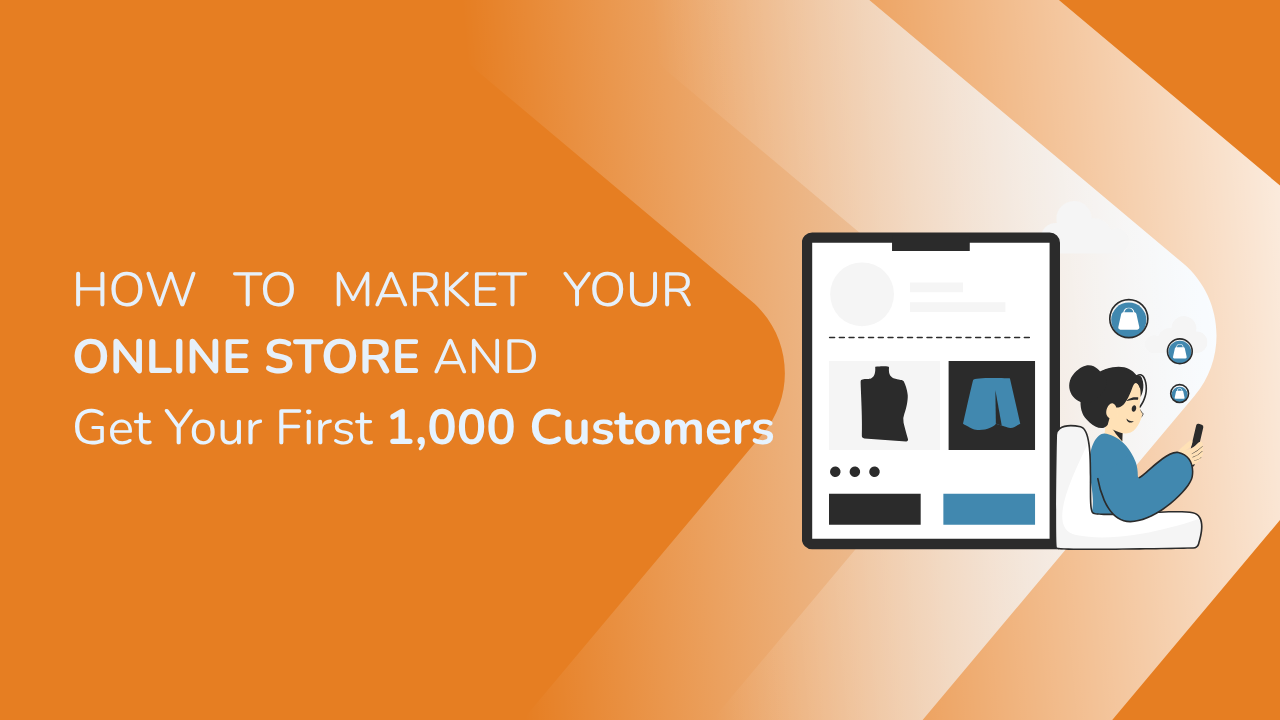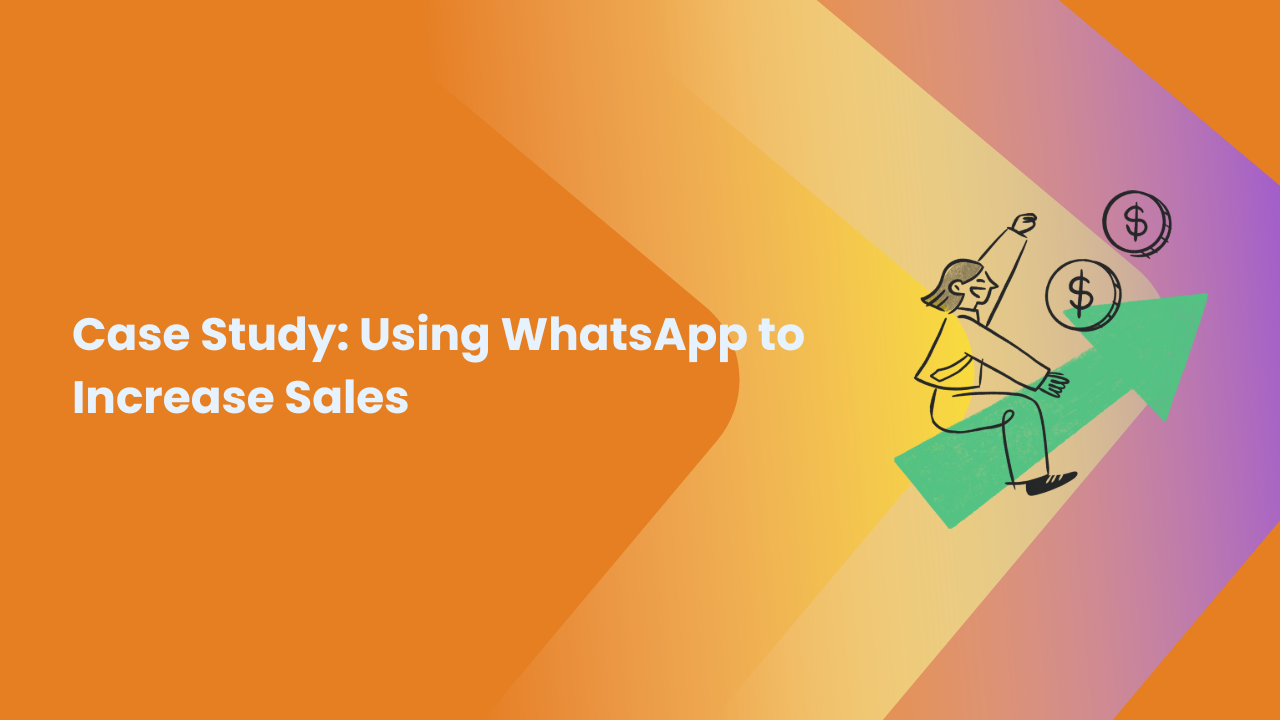Share this Article
Introduction: The Era of Online Entrepreneurship
In today’s digital world, establishing a business no longer requires vast capital or owning a physical shop. The internet has opened the doors to entrepreneurs who dream of starting small but reaching big. Online stores are now a viable option for individuals looking to tap into both local and international markets without heavy upfront investment. The idea is simple: sell products or services online with minimal financial risk while focusing on marketing, customer service, and smart inventory management. This guide explores the practical steps to start an online store on a shoestring budget, helping aspiring entrepreneurs turn their ideas into profitable ventures.
Understanding the Online Store Model
Before diving into the technicalities, it is crucial to understand what an online store entails. Unlike a traditional brick-and-mortar business, an online store allows you to display products digitally, handle transactions electronically, and reach a wider audience. The model can vary: some entrepreneurs focus on dropshipping, where inventory is handled by suppliers; others maintain a small stock of products to fulfill orders directly. Choosing the right model depends on the type of product, target audience, and available resources. Understanding the core operational model will influence decisions regarding platform selection, marketing strategy, and cost management.
Choosing the Right Niche
The foundation of any successful online business is a clearly defined niche. A niche is a focused segment of the market where your products or services will cater to a specific audience. Identifying a niche helps reduce competition and allows you to position your store as a specialized destination. Conducting market research is vital: explore trends, analyze competitor offerings, and assess potential customer demand. For a low-investment online store, selecting products that are lightweight, inexpensive to ship, and have steady demand is ideal. A well-chosen niche can make the difference between a struggling store and a thriving digital business.
Market Research and Validation
Market research is the process of understanding your potential customers, competitors, and industry trends. This involves analyzing online forums, social media platforms, and e-commerce marketplaces to identify what products people are actively searching for. Validating your idea can be done with minimal investment, such as running small-scale advertising campaigns, testing sample products, or conducting surveys. Market validation ensures that there is a demand for your offerings before committing significant time and money. It also helps in tailoring your marketing strategies to reach the right audience effectively.
Creating a Lean Business Plan
A business plan is not just for investors; it is a roadmap that defines your business goals, strategies, and financial projections. For a low-investment online store, the business plan should focus on lean strategies that minimize costs and maximize returns. Outline your product line, pricing strategy, target audience, marketing plan, and initial budget. Setting achievable milestones and performance metrics allows you to track progress and adapt quickly. A clear plan prevents unnecessary spending and ensures that resources are allocated efficiently, making it easier to grow sustainably over time.
Choosing a Platform and Setting Up Your Store
Selecting the Right E-Commerce Platform
One of the most critical decisions when starting an online store is choosing the right platform. Your e-commerce platform acts as the backbone of your business, managing product listings, payment processing, and customer interactions. For low-investment entrepreneurs, the goal is to select a platform that is affordable, easy to use, and scalable as the business grows. Popular options include Shopify, WooCommerce (for WordPress), Wix, and BigCommerce. Each platform has its advantages: Shopify offers simplicity and built-in tools, WooCommerce provides flexibility for those familiar with WordPress, and Wix is beginner-friendly with visual editing. Comparing pricing plans, transaction fees, and available integrations ensures you choose the platform that best fits your budget and long-term goals.
Designing a User-Friendly Store
The design of your online store significantly affects customer experience and sales conversion. A clean, professional, and intuitive design encourages visitors to browse products and complete purchases. Even with limited funds, affordable website templates or themes can help create a visually appealing store. Focus on simplicity: a clear navigation menu, concise product descriptions, high-quality images, and an easy-to-use checkout process are essential. Investing in a mobile-friendly design is particularly important, as a large portion of online shoppers now use smartphones to browse and buy products. A well-designed store builds trust and encourages repeat customers without the need for expensive custom development.
Domain Name and Branding
Your domain name is more than just a website address; it reflects your brand identity. Choose a domain that is short, memorable, and relevant to your niche. Avoid complex spellings or overly generic names, as they can make it harder for customers to find you online. Branding goes beyond the domain: consider logo design, color schemes, and tone of communication. A cohesive brand image creates a professional appearance and helps your store stand out in a crowded online marketplace. For entrepreneurs on a low budget, affordable tools like Canva or free logo generators can be used to develop branding elements without hiring professional designers.
Setting Up Payment Gateways
A smooth payment process is crucial for converting visitors into customers. Your store should support multiple payment options, such as credit/debit cards, digital wallets, and local payment methods popular in your target market. Many e-commerce platforms offer built-in payment gateways, which simplify the process of receiving funds securely. For low-investment stores, start with gateways that charge minimal setup fees and low transaction costs. Ensuring that payments are processed securely and efficiently enhances customer confidence and reduces abandoned carts, which directly impacts sales and profitability.
Inventory and Product Management
Even if you choose a dropshipping model or plan to stock products minimally, managing inventory effectively is essential. Track your stock levels, set reorder thresholds, and organize product categories logically. Platforms like Shopify and WooCommerce provide built-in tools to automate inventory updates, preventing overselling and ensuring timely order fulfillment. Low-investment entrepreneurs benefit from focusing on products with high demand and low storage costs, minimizing the financial risk while maintaining operational efficiency.
Product Sourcing, Pricing, and Supplier Management
Finding Reliable Suppliers
A key factor in running a successful online store is partnering with reliable suppliers. Your supplier determines product quality, shipping speed, and overall customer satisfaction. For low-investment entrepreneurs, options like dropshipping platforms (e.g., AliExpress, Oberlo, or local suppliers) allow you to sell products without maintaining a large inventory. When selecting a supplier, consider factors such as product quality, production time, shipping costs, and responsiveness. Requesting samples before listing products on your store ensures that customers receive goods that meet your standards. Building strong relationships with dependable suppliers reduces risks and helps maintain consistent customer satisfaction.
Choosing Products Strategically
Not all products are equally suited for low-investment online stores. To maximize profits and minimize risks, focus on products that are lightweight, non-perishable, and in steady demand. Popular categories include fashion accessories, beauty products, digital goods, gadgets, and niche hobby items. Seasonal items can generate high revenue temporarily, but it’s important to balance your catalog with evergreen products that sell year-round. Analyze market trends, customer reviews, and competitor offerings to identify products with high potential. A well-curated product selection enhances your store’s appeal and reduces the likelihood of unsold inventory tying up your funds.
Setting Competitive Pricing
Pricing is both an art and a science. For low-investment stores, it is important to strike a balance between affordability for customers and profitability for your business. Consider factors such as product cost, shipping, platform fees, and marketing expenses when setting prices. Competitive research can help you understand what customers are willing to pay. Offering bundle deals, discounts, or free shipping on select items can attract buyers without sacrificing profit margins. Transparent pricing builds trust and reduces cart abandonment, which is particularly crucial for new online stores trying to establish a reputation.
Managing Supplier Relationships
A strong relationship with your suppliers ensures smoother operations and better flexibility during high-demand periods. Maintain clear communication, provide timely payments, and discuss future growth plans. Suppliers are more likely to offer favorable terms, faster shipping, or exclusive products if you establish trust and reliability. For small entrepreneurs, having backup suppliers is also important. This ensures that even if one supplier faces stock shortages or delays, your business can continue operating without disruptions. Managing these relationships effectively is a low-cost way to ensure operational stability and long-term success.
Dropshipping vs. Inventory Holding
Low-investment entrepreneurs often face a choice between dropshipping and holding inventory. Dropshipping requires minimal upfront capital and reduces the risk of unsold stock, but profit margins can be lower and control over fulfillment is limited. Holding inventory gives you better control over quality and shipping speed, but requires more investment in storage and initial stock purchase. Many successful online stores start with dropshipping and gradually transition to inventory holding as sales and capital grow. Choosing the right approach depends on your niche, available funds, and business goals.
Digital Marketing and Customer Acquisition
Building a Strong Online Presence
Once your online store is set up, the next crucial step is attracting visitors and converting them into paying customers. A strong online presence begins with optimizing your website for search engines, commonly known as SEO (Search Engine Optimization). Use relevant keywords in product descriptions, blog posts, and meta tags to increase visibility on Google and other search engines. Creating content around your niche—such as how-to guides, product reviews, or industry news—can drive organic traffic without spending heavily on advertising. For low-investment entrepreneurs, SEO is one of the most cost-effective ways to attract potential buyers consistently over time.
Leveraging Social Media Platforms
Social media is a powerful tool for promoting your store and engaging with your audience. Platforms such as Facebook, Instagram, TikTok, and Pinterest allow you to showcase products, share behind-the-scenes stories, and interact with potential customers. Focus on platforms where your target audience is most active. Creating visually appealing content, running small-scale ad campaigns, and collaborating with micro-influencers can increase visibility without significant investment. Social media also provides a platform for direct communication, helping build trust and brand loyalty.
Email Marketing and Customer Retention
Email marketing is an often-overlooked but highly effective method to retain customers and encourage repeat purchases. Collect email addresses through newsletter sign-ups, discounts, or free resources on your website. Sending regular updates about new products, special offers, and promotions keeps your audience engaged. Personalized emails, such as recommending products based on past purchases, can significantly improve conversion rates. For entrepreneurs starting with a low budget, free or inexpensive email marketing tools can provide automation and analytics to track effectiveness without overspending.
Paid Advertising on a Budget
While organic traffic is essential, targeted paid advertising can accelerate growth for your online store. Platforms like Facebook Ads, Google Ads, and Instagram Ads allow precise targeting based on demographics, interests, and behaviors. Start with a small budget, test different ad creatives, and monitor performance metrics closely. Low-cost campaigns focusing on high-converting products can generate meaningful returns even with minimal investment. Over time, scaling successful ads while cutting underperforming ones ensures that every marketing dollar is used efficiently.
Content Marketing and Storytelling
Storytelling creates a deeper connection with your audience. Share the story behind your brand, the journey of your products, or customer testimonials to build credibility and emotional appeal. Content marketing through blogs, videos, or social posts not only educates your audience but also strengthens brand recognition. Engaging content encourages sharing, amplifying your reach organically. For a low-investment store, creative content can provide a competitive edge against larger businesses with bigger marketing budgets.
Leveraging Online Marketplaces
In addition to your store, listing products on online marketplaces like Amazon, Etsy, or Daraz (for Nepal and South Asia) can boost visibility and sales. Marketplaces often provide access to large customer bases and handle aspects like payment processing and customer trust. While there are fees involved, selling through marketplaces can be a strategic low-risk approach to test products, gather reviews, and build your brand reputation before fully relying on your independent store.
Order Fulfillment, Customer Service, and Operational Efficiency
Streamlining Order Fulfillment
Efficient order fulfillment is a cornerstone of customer satisfaction and business sustainability. For low-investment online stores, it is vital to choose a fulfillment method that balances cost and speed. Dropshipping allows suppliers to handle shipping directly to customers, minimizing upfront costs and storage needs. If you hold inventory, consider using third-party logistics (3PL) providers or simple home-based packaging systems to manage orders. Automating order tracking and sending notifications to customers improves transparency and builds trust. Ensuring accurate and timely deliveries strengthens your store’s reputation, reduces returns, and increases repeat sales.
Providing Exceptional Customer Service
Customer service can be the deciding factor between a one-time buyer and a loyal customer. Promptly responding to inquiries, resolving complaints, and providing clear information about products, shipping, and returns creates a positive shopping experience. Even with a small budget, tools like live chat widgets, email support, and social media messaging can provide effective communication channels. Personalizing responses and showing empathy enhances customer satisfaction, and positive reviews or word-of-mouth referrals can drive growth without extra marketing expenses. For low-investment stores, exceptional service is a low-cost strategy with high impact.
Managing Returns and Refunds
Returns and refunds are inevitable in e-commerce, and handling them professionally is critical. Clear return policies displayed on your website reduce confusion and increase buyer confidence. Offering hassle-free returns—even within specific limits—can improve trust and encourage purchases. Efficiently processing refunds and keeping customers informed throughout the process turns a potentially negative experience into a positive one. A well-managed return system ensures that your store maintains credibility and customer loyalty while minimizing losses.
Tracking Performance Metrics
Monitoring performance metrics allows you to make informed decisions and optimize operations. Key indicators include sales volume, conversion rates, cart abandonment, website traffic sources, and customer satisfaction scores. Most e-commerce platforms provide analytics tools that track these metrics in real-time. Low-investment entrepreneurs can use this data to identify high-performing products, understand customer behavior, and refine marketing campaigns. Regular analysis and adjustment based on metrics lead to better resource allocation, increased efficiency, and higher profitability without additional spending.
Cost Management and Budgeting
Keeping a close eye on expenses is essential for running a profitable online store on a tight budget. Track all operational costs, including platform fees, marketing spend, shipping, packaging, and supplier payments. Focus on strategies that provide the highest return on investment, and avoid unnecessary expenditures. Using free or low-cost tools for website maintenance, marketing, and analytics can further reduce overhead. Maintaining disciplined budgeting ensures that even with limited funds, your business can operate sustainably and grow steadily.
Scaling Operations Gradually
Once your store begins generating consistent revenue, consider scaling operations strategically. This could involve expanding your product line, exploring new marketing channels, or investing in faster shipping solutions. Scaling gradually allows you to reinvest profits, test new strategies, and minimize risk. Avoid overextending resources too quickly, as this can jeopardize both customer experience and financial stability. For low-investment entrepreneurs, smart scaling ensures long-term growth while preserving the efficiency and agility that helped your business succeed initially.
Growth Strategies, Advanced Marketing, and Long-Term Sustainability
Expanding Your Product Line
Once your online store establishes a consistent customer base, expanding your product line is a natural way to increase revenue. Introduce complementary products or variations of existing offerings to encourage repeat purchases and increase average order value. Conduct market research and analyze customer feedback to identify products that align with your audience’s needs. For low-investment entrepreneurs, gradual expansion helps manage costs while testing new offerings before committing significant resources. Thoughtful product expansion enhances your store’s appeal and strengthens its position in the market.
Leveraging Influencer Marketing
Influencer marketing has become an effective strategy for online stores looking to reach targeted audiences quickly. Collaborating with micro-influencers or niche creators can generate buzz and drive traffic at a relatively low cost. Influencers provide authentic recommendations that resonate with their followers, increasing credibility for your brand. Start by building relationships with influencers in your niche, offering free products or small commissions for promotion. Measuring the impact of influencer campaigns ensures you invest in partnerships that deliver tangible results.
Optimizing Your Sales Funnel
A sales funnel guides potential customers from initial awareness to purchase and beyond. Optimizing each stage of the funnel ensures maximum conversions with minimal marketing spend. This includes attracting visitors through SEO or ads, engaging them with compelling content, capturing leads via email sign-ups, and converting them through clear calls-to-action and user-friendly checkout. Post-purchase strategies like follow-up emails, loyalty programs, and personalized offers keep customers returning. For low-investment online stores, a well-structured sales funnel maximizes the value of every visitor without needing heavy advertising budgets.
Utilizing Analytics for Growth
Data-driven decision-making is essential for sustainable growth. Track key metrics such as customer acquisition cost, lifetime value, conversion rates, and engagement levels to identify opportunities for improvement. Analytics tools provided by platforms like Shopify, WooCommerce, or Google Analytics allow you to monitor website performance and marketing effectiveness. Adjusting strategies based on real data ensures your efforts are focused on high-impact activities, reducing wasted time and money while increasing profitability.
Building Customer Loyalty
Long-term success depends on cultivating loyal customers who make repeat purchases and promote your store. Implementing loyalty programs, referral incentives, and exclusive offers encourages repeat business. Engaging customers through newsletters, social media, and personalized communications strengthens relationships and fosters trust. Loyal customers often act as brand advocates, providing valuable word-of-mouth marketing that requires minimal financial investment. Focusing on customer retention is often more cost-effective than constantly acquiring new buyers.
Diversifying Marketing Channels
Relying on a single marketing channel can be risky. Diversifying your outreach across multiple platforms—social media, email marketing, content marketing, paid advertising, and marketplaces—ensures stability and growth. Each channel serves a unique purpose: social media builds engagement, email marketing drives repeat sales, SEO attracts organic traffic, and ads reach targeted prospects. Testing different channels with small budgets allows you to identify the most effective strategies without overspending. Diversification reduces dependence on one source of traffic and ensures steady growth.
Planning for Long-Term Sustainability
Sustainability is not only about profits; it also involves maintaining a scalable and efficient business model. Continuously improve processes, update product offerings based on trends, and invest in tools that enhance efficiency. Stay informed about market changes and competitor strategies to adapt proactively. Maintaining a lean operation while focusing on customer satisfaction, product quality, and brand reputation ensures your online store remains competitive over time. Long-term sustainability requires discipline, adaptability, and a willingness to innovate within budget constraints.
Conclusion and Roadmap for Success
Recap of Key Steps
Starting an online store with low investment is entirely achievable when approached strategically. From selecting the right niche and conducting thorough market research to building a user-friendly website and implementing cost-effective marketing strategies, every step plays a critical role in the success of your business. By focusing on lean operations, prioritizing customer satisfaction, and leveraging affordable tools and platforms, even entrepreneurs with minimal funds can establish a profitable online store. Understanding the balance between cost, quality, and scalability ensures that your venture grows sustainably over time.
Emphasizing Smart Financial Management
Financial discipline is essential for low-investment entrepreneurs. Tracking expenses, managing cash flow, and prioritizing high-impact activities are key to staying profitable. Avoid unnecessary spending on complex tools or large inventories until revenue stabilizes. Utilize free or low-cost solutions for website management, marketing, and analytics, and reinvest profits strategically to expand product lines or enhance customer experience. Sound financial management ensures your business remains resilient and adaptable even during challenging periods.
Building a Brand That Resonates
Branding is more than just logos and colors—it’s about creating a memorable identity that resonates with your audience. A strong brand communicates trust, quality, and reliability. Consistency in messaging, visuals, and customer interaction helps your store stand out in a competitive market. Engaging storytelling, transparency, and exceptional service strengthen brand perception and foster long-term customer loyalty. Even on a tight budget, focusing on authentic branding and meaningful connections can create a lasting impression.
Adapting to Market Trends
The online marketplace is dynamic, with constantly evolving customer preferences, technology, and competition. Low-investment entrepreneurs must remain flexible and adapt quickly to trends. Regularly analyzing sales data, customer feedback, and industry developments helps identify new opportunities and avoid potential pitfalls. Adapting your product offerings, marketing strategies, and operations in response to these insights ensures that your store remains relevant and competitive over time.
Taking Action: Your Roadmap to Launch
- Identify Your Niche: Choose products with demand, low upfront costs, and manageable logistics.
- Select a Platform: Use affordable, user-friendly e-commerce platforms to create your store.
- Source Products Smartly: Partner with reliable suppliers, or start with dropshipping to minimize risk.
- Design a Professional Store: Prioritize mobile-friendly layouts, high-quality visuals, and clear navigation.
- Implement Marketing Strategies: Use SEO, social media, email campaigns, and influencer marketing to reach your audience.
- Focus on Customer Service: Offer exceptional support, clear return policies, and personalized communication.
- Track Performance and Optimize: Use analytics to refine marketing, product offerings, and operational efficiency.
- Scale Gradually: Expand product lines, explore new channels, and reinvest profits strategically.
Final Thoughts
Starting an online store with low investment requires patience, creativity, and disciplined execution. While challenges exist, modern technology and accessible tools have democratized entrepreneurship, allowing anyone with determination to reach a global audience. By following a structured approach, maintaining financial prudence, and prioritizing customer satisfaction, a small online store can grow into a thriving business. Remember, consistent effort, adaptability, and smart decision-making are the true drivers of long-term success. With this roadmap, aspiring entrepreneurs can confidently take the first steps toward building a profitable online venture without the burden of high upfront costs.
Categories:
Marketing & Growth
Tags:
Online Store in Nepal
,
Store







